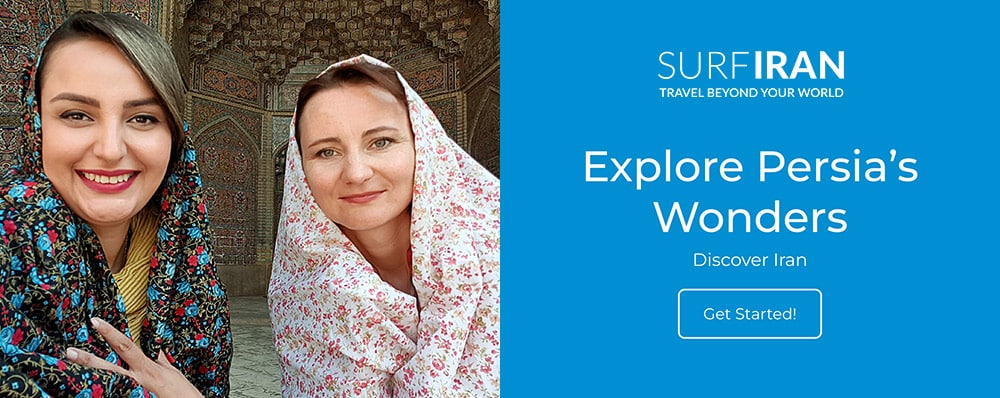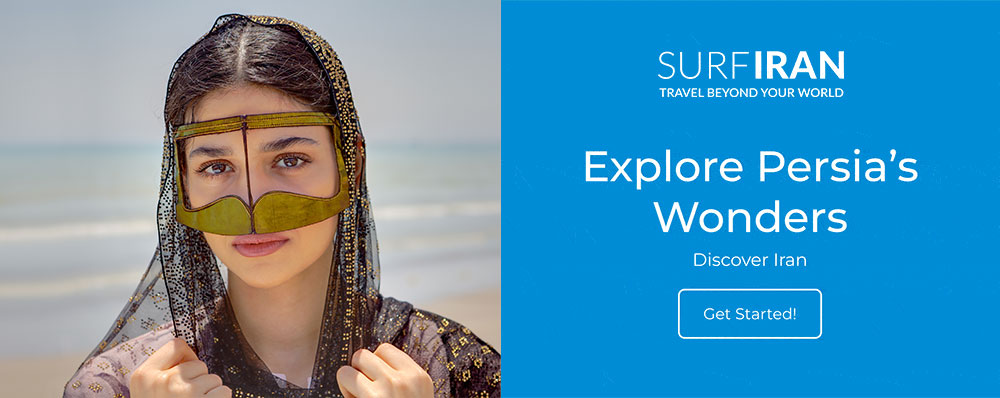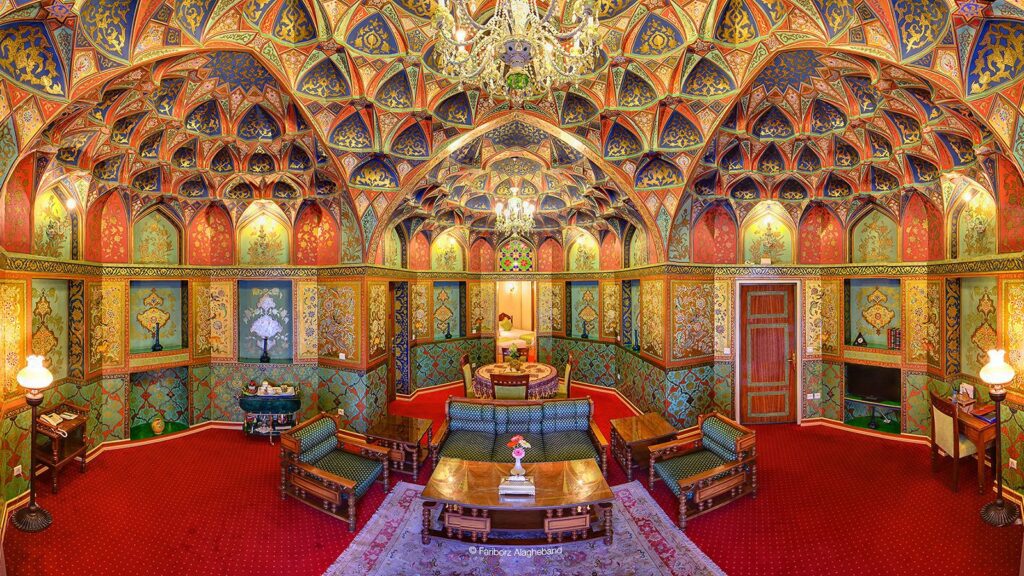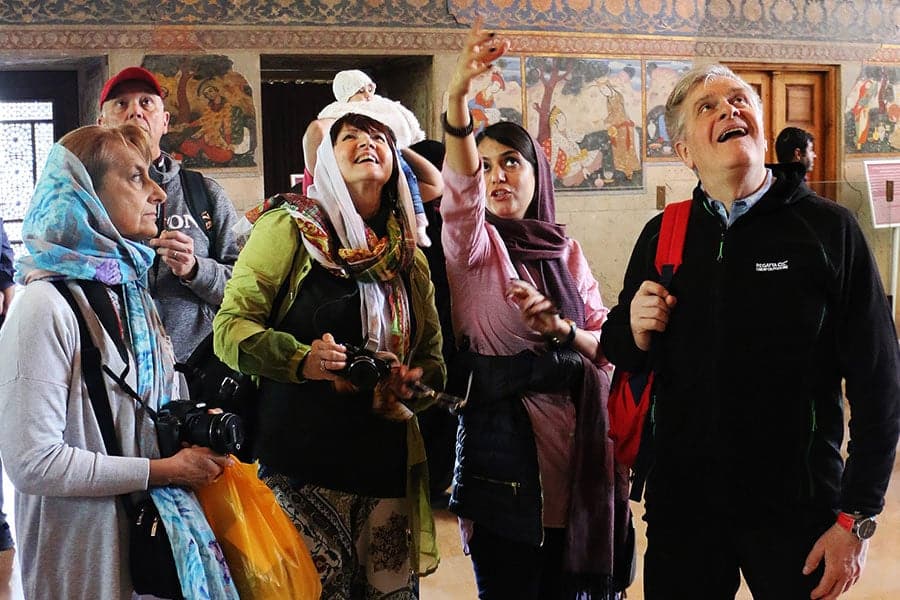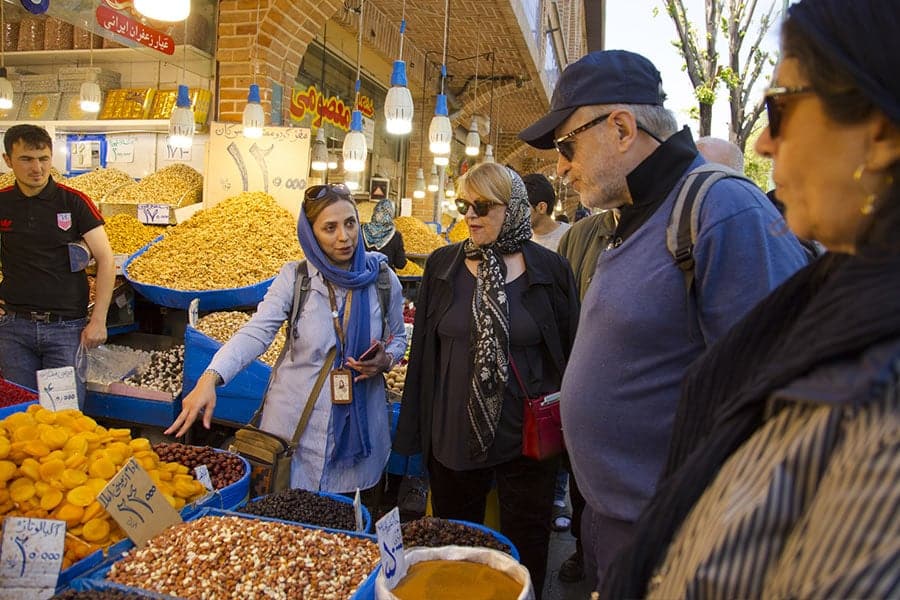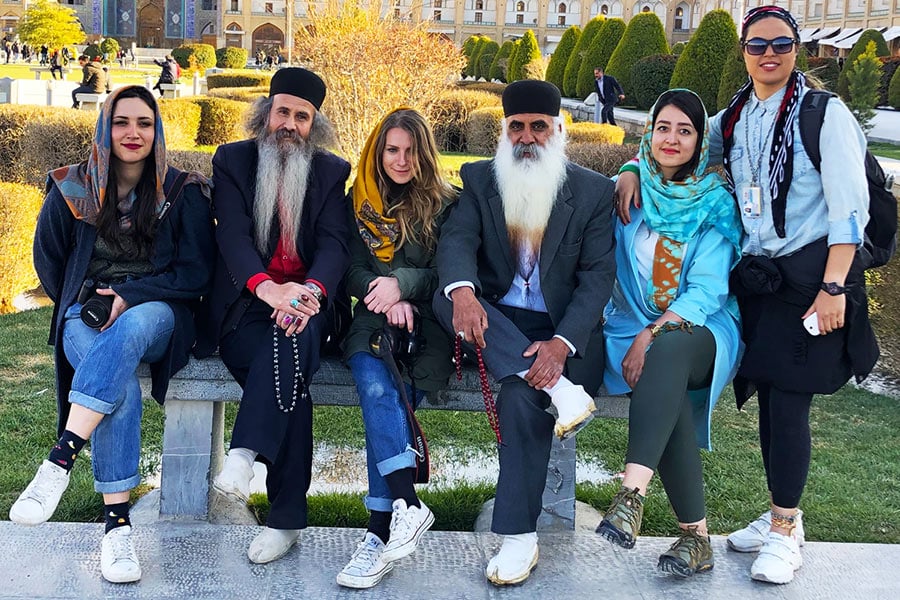Zanjan Travel Guide: Top Sights & Tips + Photos
Things to Do in Zanjan – Activities & Attractions
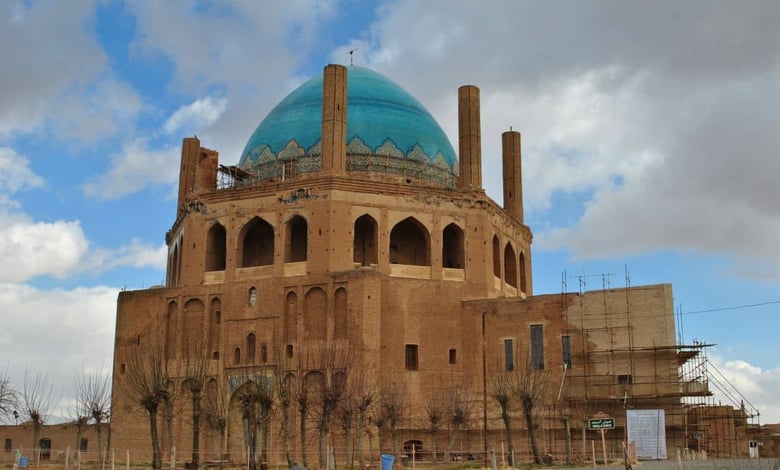
Discover Zanjan, a captivating destination in Iran that beckons travelers with its rich history, stunning architecture, and vibrant cultural heritage.
Situated in the northwest of Iran, Zanjan offers an array of attractions that promise an unforgettable journey. From the ancient ruins of the Rakhtshoy Khaneh (Historical Wash House) to the architectural marvel of the Soltaniyeh Dome as a UNESCO site, this city serves as a gateway to Iran’s illustrious past.
Zanjan stands out for its unique handicrafts, especially its world-renowned knives, traditional footwear (Charoogh), and exquisite filigree work. The city’s bazaars are a treasure trove for those looking to take a piece of Iranian artistry home. For the adventurous, the surrounding landscapes offer spectacular trekking opportunities, revealing serene nature and hidden wonders at every turn.
Food enthusiasts will revel in Zanjan’s culinary scene, where local dishes like Dizi and Gheymeh Nesar not only tantalize the taste buds but also offer a glimpse into the region’s gastronomic traditions.
Our comprehensive Zanjan Travel Guide on SURFIRAN is your perfect companion for exploring this captivating city. Whether you’re planning a visit or simply dreaming of distant lands, our guide provides essential tips, from top sights to hidden gems, ensuring your trip is both seamless and memorable.
Prepare to explore Zanjan, where every corner tells a story, and every experience enriches your travel tapestry. Join us on a journey through time and tradition in one of Iran’s most fascinating cities.
Contents
About Zanjan
The city and its surrounding province are replete with attractions that range from ancient archaeological sites to artisanal wonders.
Whether you’re in search of history, adventure, or simply the pleasure of discovering an off-the-beaten-path locale, Zanjan has it all. This comprehensive guide serves as your trusted companion to help you explore the best of Zanjan.
Zanjan province with 22500 square kilometer situated in North West of Iran between 3715′- 35 033′ N and 471 0′ – 49 026′ E.
Zanjan sits in central Iran, falling within the North West geomorphological unit. Its strategic location on a major transit route makes it a vital link between the central, western, and northwestern parts of the country.
It serves as a key connecting point, linking the central, western, and northwestern regions of the country, thanks to its position on a major transit route.
Best Time To Visit Zanjan
Spring (March to May) and autumn (September to November) stand as the best seasons to explore Zanjan. During these months, the weather is pleasantly mild, making it perfect for sightseeing and outdoor activities. The city’s landscape transforms with the changing seasons, offering a picturesque backdrop for your adventures. Spring welcomes you with blooming flowers and lush greenery, while autumn wraps the city in warm hues, creating a serene ambiance.
Moreover, these seasons host several cultural events and festivals, providing a deeper insight into the local traditions and lifestyle. Visiting during these times not only ensures a comfortable climate but also enriches your travel experience with authentic cultural immersion.
| Month | Visit Recommendation | Reason |
|---|---|---|
| January | ❌ Not Recommended | Cold weather, fewer outdoor activities |
| February | ❌ Not Recommended | Cold weather, fewer outdoor activities |
| March | ✅ Recommended | Beginning of spring, mild weather |
| April | 🌟 Highly Recommended | Perfect weather, spring blooms |
| May | 🌟 Highly Recommended | Pleasant weather, ideal for sightseeing |
| June | ✅ Recommended | Warm, starting to get hot, good for travel |
| July | ⚠️ Caution | Hot weather, might be less comfortable |
| August | ⚠️ Caution | Hot weather, might be less comfortable |
| September | ✅ Recommended | Start of autumn, cooler and pleasant |
| October | 🌟 Highly Recommended | Excellent weather, autumn colors |
| November | ✅ Recommended | Mild weather, end of autumn beauty |
| December | ❌ Not Recommended | Cold weather, fewer outdoor activities |
How to Get to Zanjan
Planning your journey to Zanjan, Iran, couldn’t be simpler with our straightforward guide. Whether you’re flying into Tehran and seeking the best overland routes or exploring direct connections from major cities, we’ve got you covered. Zanjan is accessible by road, rail, and bus, offering flexible options for travelers.
Our guide on SURFIRAN provides essential tips to ensure a smooth trip, including insights on travel times, ticket booking, and local transport tips. Start your adventure to Zanjan with ease, embracing the comfort and convenience of well-informed travel planning.
By Air
The closest international airport is Imam Khomeini International Airport in Tehran. From there, you can reach Zanjan by road or rail.
To book your flights, you can head to OrientTrips.
By Road
The distance from Tehran to Zanjan is around 330 km, making it a 4-hour drive on the Tehran-Zanjan highway.

By Train
Iran boasts an impressive railway network, making train travel a comfortable and scenic option.
You can catch a train from major cities like Tehran to Zanjan, enjoying the diverse Iranian landscapes along the way. For train tickets, explore the options at train ticket booking.
Best Hotels in Zanjan
BOOK ONLINE
Iran Hotels Online
In Zanjan, a city that caters to every taste and budget, finding the perfect hotel is effortless. Below is a curated list of the best hotels in Zanjan to simplify your selection and reservation process.
Zanjan Grand Hotel, 4-Star
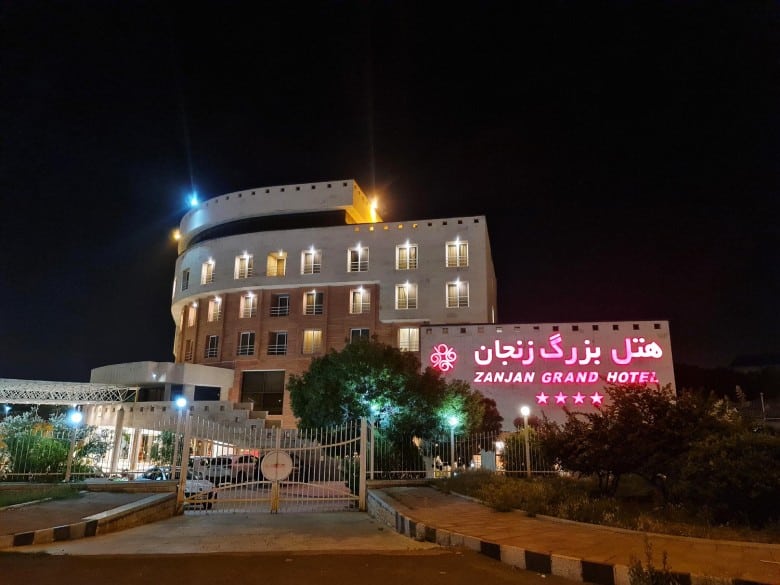
Like most major cities, Zanjan boasts a grand hotel. The Zanjan Grand Hotel, a 4-star establishment, ranks among the finest in the city. Located at the Tehran-Zanjan freeway entrance, it sits in a scenic area with mountain and forest views. Spread over 10,000 square meters, this six-story hotel features 48 rooms and suites, positioned outside the city’s traffic scheme.
Amenities: Pool, sauna, Jacuzzi, coffee shop, conference hall, restaurant, shopping center, green space, dry cleaning, private parking, and fast food restaurant.
Nearby Attractions: The Grand Hotel is a 10-minute drive from Zanjan’s bazaar, with the Stone Caravanserai and the Jame Mosque also within a 10-minute reach.
Payam Hotel Zanjan, 3-Star
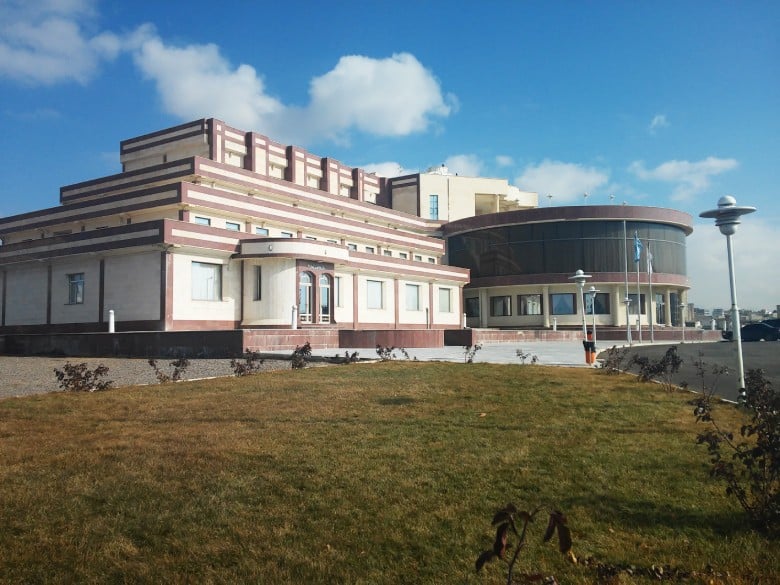
For those preferring a city-center location near the lake, Payam Zanjan Hotel is the choice. This esteemed hotel, operational since 2001 and last renovated in 2015, has four floors and 30 accommodation units.
Amenities: Restaurant, parking, elevator, pergola and green space, gym, wedding hall, in-room internet.
Nearby Attractions: Melat amusement park is a 5-minute walk, Zanjan’s bazaar 15 minutes away, and the Stone Caravanserai is a 12-minute drive from the hotel.
Sepehr Hotel Zanjan, 3-Star
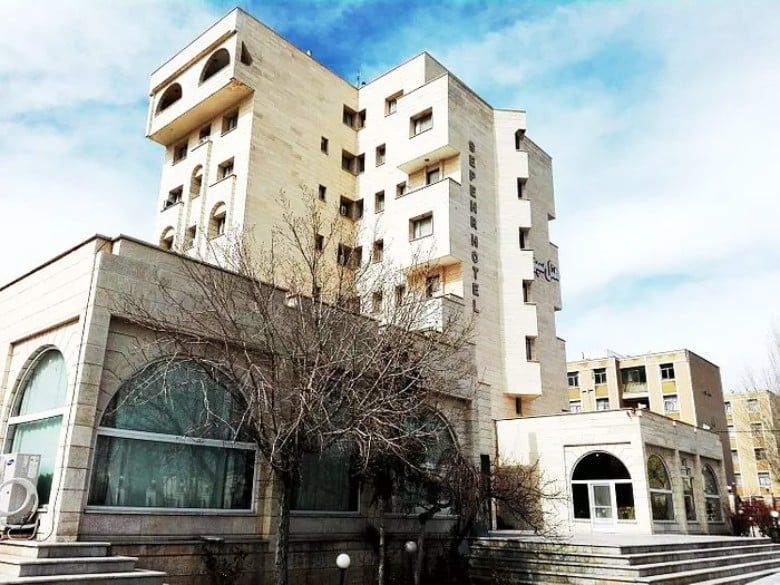
Another noteworthy hotel in Zanjan is the 3-star Sepehr Hotel. Opened in 2002 near Azadegan town, it spans seven floors with 32 suites. Its proximity to the recreational and tourism complex of Eil Goli and the Gavazang entertainment complex is a significant advantage. Breakfast is complimentary, and the suites are spacious.
Amenities: Restaurant, parking, elevator, dry cleaning, conference room.
Nearby Attractions: The hotel is 4 km from Gavazang entertainment complex and a 42-minute drive to the Soltaniyeh Dome, one of Zanjan’s top sights.
Park Hotel Zanjan, 3-Star
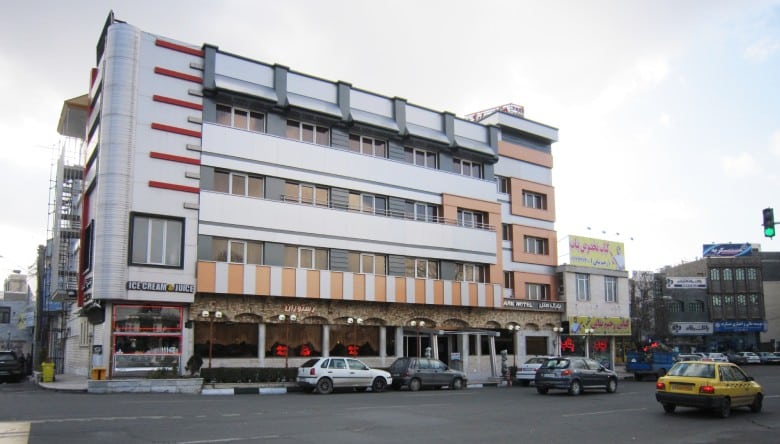
When reviewing Zanjan’s hotel options, Park Hotel stands out as one of the city’s most established. Opened in 1978 and renovated in 2009, it features 35 rooms across five floors. Besides its relatively affordable rates, its central location near Zanjan Azad University is a major benefit.
Amenities: Restaurant, parking, lobby internet, coffee shop, elevator.
Nearby Attractions: Zolfagari Mansion, Zanjan bazaar, Haj Dadash bath, and the historical laundry house are all within 1 km of the hotel.
Jahangardi Hotel Zanjan, 2-Star
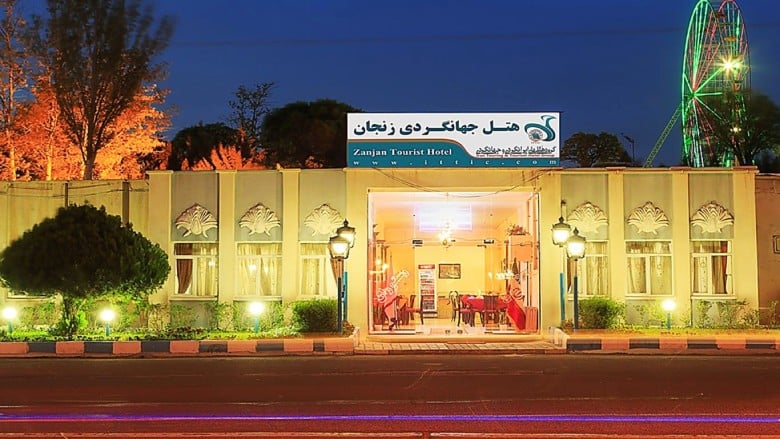
Like all Iranian cities, Zanjan features a Jahangardi Hotel, part of the Jahangardi Hotels group. Its rooms, designed as double-bed villa cottages in green spaces, ensure a peaceful stay. With 16 rooms, this hotel offers a quiet atmosphere.
Amenities: Parking and restaurant.
Nearby Attractions: Melat Park is just steps away, and Zanjan’s bazaar is a 15-minute drive from the hotel.
Zanjan Top Attractions
Tourist attractions are located all across the province and can be classified as natural, social, historic, and cultural. In this regard, a town such as Zanjan is hosts to the most number of these attractions.
Perhaps the most prominent site in the province is the magnificent edifice of The Soltaniyeh Dome which is one of the most exceptional and famous Islamic sites dating back to 700 years ago.
The Dome listed in UNESCO world heritage and plays a great role in the tourism of the region.
According to the last state divisions this province has 3 provincial districts, 13 regions, and 8 towns. In November 1996, the population of this province was approximately 901,000; out of which about 47% resided in urban areas, around 52% were rural dwellers, and a number were non-residents.
Zanjan was located on Commercial Silk road and is one of the few cities with no clear historical identity and identity and written memory of history don’t much talk about the historical, social, scientific, artistic and cultural information of Zanjan.
In recent years, Zanjan has seen significant growth in various fields, particularly in the realm of handicrafts. The city has gained special recognition for producing and supplying art products, thanks to the local people’s dedication to craftsmanship.
Soltaniyeh dome
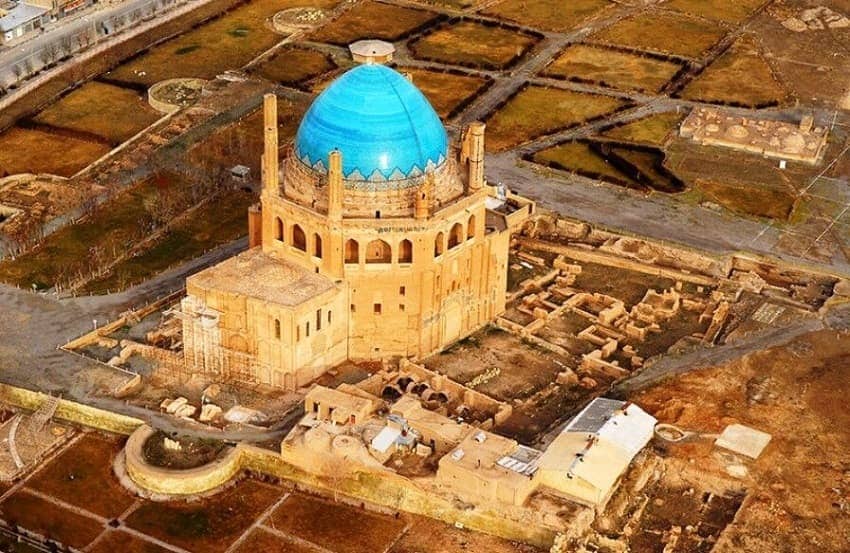
The Soltaniyeh Dome, nestled in Iran’s Zanjan Province, stands as a testament to the architectural prowess of the Ilkhanid era.
Recognized as a UNESCO World Heritage site, this monumental structure renowned for being the world’s third-largest dome, trailing only the domes of Santa Maria del Fiore in Florence and Hagia Sophia in Istanbul. What sets the Soltaniyeh Dome apart is its distinction as the largest dome constructed of bricks in the world, a remarkable feat of engineering and design.
Constructed in the 14th century, the dome crowns the Mausoleum of Ilkhan Oljaytu, showcasing an intricate blend of Persian and Islamic architectural styles. Its azure blue tiles and towering stature dominate the landscape, offering a breathtaking spectacle.
Inside, the mausoleum adorned with stunning mosaics, faience, and murals, reflecting the artistic zenith of its time.
The Soltaniyeh Dome is not just a historical landmark but a symbol of Iran’s rich cultural and architectural heritage.
Haj dadash bathhouse
One of the oldest buildings in Zanjan, Haj Dadash Bathhouse is located in the Zanjan Bazaar complex. This century-old bath house has a dome that sits on four stone pillars, carved by master stonemasons from Hamadan. After renovation and minor changes to the original structure, Haj Dadash Bathhouse turned into a traditional Restaurant.
Rakhtshooy Khaneh Edifice
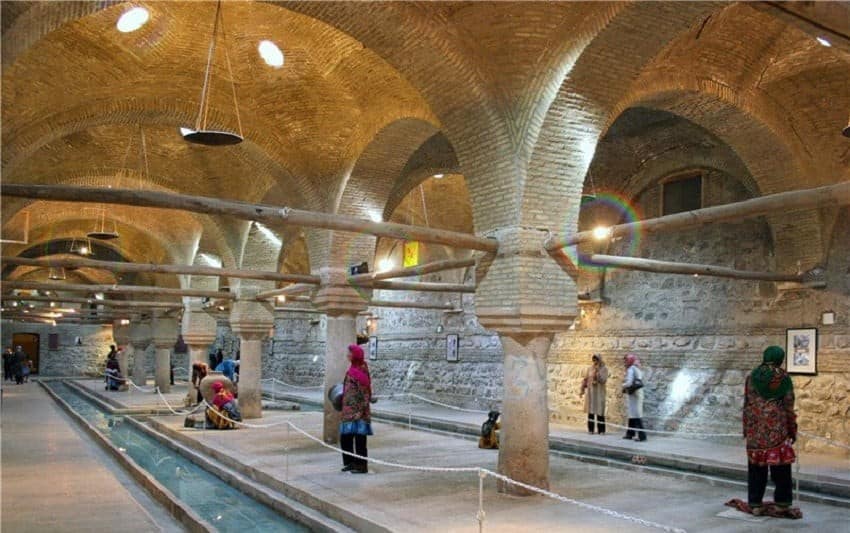
Zanjan Wash House or known locally Rakhtshooy Khaneh Edifice is located in the old Abass-Qoli neighborhood of the city and built in 1928 by the then mayor of the city Ali Akbar Tofiqi to provide the women of the city with a closed space to do their laundry.
This Qajar era (1785-1925) structure built entirely of brick and stone.
The Wash House consists of two parts Managerial Quarters and Laundry Room. The Managerial Quarters consists of a residential building and a courtyard with trees and flowers. An entrance in the northern part of the courtyard connects the residential building with the laundry room.
Zanjan Wash House has a 17-meter long and 11.5-meter wide Khazineh, a room with a large hot water pool, which has an 8-meter high ceiling.
A terrace-like platform built directly across from the laundry room, where the manager of the Wash House would sit and oversee the business. A nearby Qanat (underground water management system) provided water for the Wash House. Zanjan Wash House turned into an Anthropology Museum in 1998
Katale Khor Cave
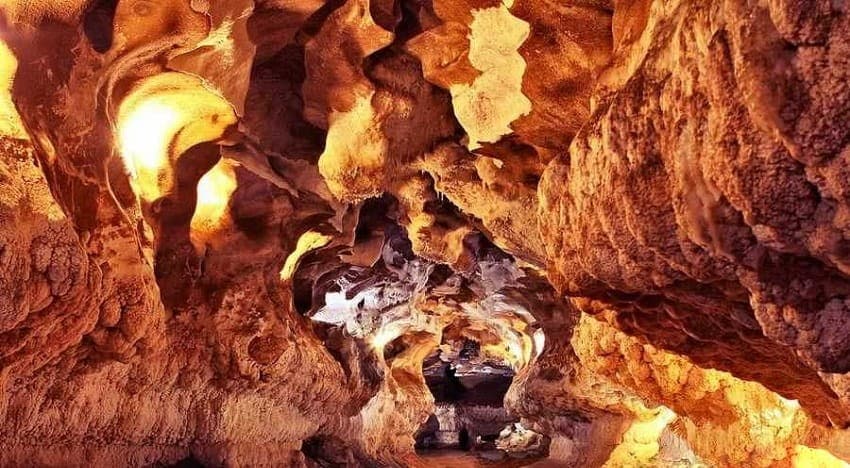
Katale Khor Cave, located in Zanjan Province, Iran, presents an astonishing geological wonder. Situated 120 km south of Zanjan city and approximately 410 km from Tehran, this cave carries the intriguing name “mount of the sun”. Geological research conducted in 1984 reveals that the formation of Katale Khor dates back to the Jurassic period, adding to its historical significance.
Mirbaha Bridge
The Mir Baha-ol-Din Bridge, also known as the Old Bridge, stands as a testament to historical engineering on the Zanjan River (Zanjan Roud). Dating back to the Qajar era (1785-1925), a merchant bearing the same name constructed this brick marvel.
Spanning 100 meters in length and 7 meters in width, the bridge reaches a height of 11 meters at its peak. It features a prominent middle arch flanked by two smaller ones. In 1977, authorities recognized its cultural significance, registering it as a National Heritage Site.
Sohrein protected area:
Persian gazelle (Gazella subgutturosa) holds a vital place in global wildlife, especially noted for its extensive presence in Iran. The Sohrain plain, located within the Sorkhabad protected region in Zanjan province, boasts the largest population of this species in the country. This highlights the region’s ecological importance in preserving these graceful animals.
Kervansaray Sangi
Caravanserai Sangi, also known as the Stone Caravanserai, stands as a historic marvel in Zanjan city from the Safavid dynasty.
It’s the oldest monument in Zanjan, showcasing a unique four-iwan (porch) design. The structure’s one-story chambers, or hojrehs, and the arcade-style ceiling add to its architectural appeal. Its construction primarily uses stone, earning it the nickname ‘Stone Caravanserai’.
This 400-year-old L-shaped building features 10 carpet-decked vaulted alcoves, all facing a series of tables. In 1998, the Iranian Cultural Heritage Organization officially recognized the Sangi Caravanserai, listing it in the national index under number 2128.
Jame mosque of Zanjan
Jame’ Mosque, located in the historical section of the city, stands as a significant Qajar-era monument. Commissioned by Abdollah-Mirza Dara, the son of Fath-Ali Shah, a notable Qajar monarch, this mosque also goes by the names Seyyed Mosque and Seyyed Madrasa.
Historical records trace the mosque’s original construction to the first half of the thirteenth century, with notable developments in the Pahlavi period. This mosque represents a blend of rich history and cultural heritage.
Zolfaghari manzim
Zolfaqari Mansion, a quintessential Qajar era (1785-1925) structure, nestles in the old quarters of Zanjan. True to traditional Persian architecture, it features distinct sections.
The Andarouni, or interior, served as a private space for women and servants. The Birouni, or exterior, functioned as the public area predominantly used by men. Additionally, this mansion includes living quarters for servants and spaces dedicated to administrative purposes, showcasing the rich cultural heritage of the period.
A series of tunnels on the ground floor Mansion or and basement once connected the Andarouni, Birouni and the administrative quarters.
The structure is a combination of Symmetrical Persian designs and European architecture.
The building has a dome-shaped octagonal light well which known as the Pavilion (Kolah Farangi). The ceilings of all rooms in his structure have geometrical designs and Persian and Islamic motifs. The Qajar-style tile work on the ground floor has the famed lotus design.
The twin windows used throughout the building have stained glass decorations. In 2009, the mansion became the Anthropology Museum of Zanjan and now houses the Saltmen discovered at Chehrabad Mine. Zolfaqari Mansion registered as a National Heritage Site in 1996.
Shilander village
Shilandar village is located 40 km far from Zanjan. The village has stepped architecture and is one of the most beautiful villages in the province and after passing through the village of Aliabad and Taham. The architecture of the village is the same as Masule village in the mountainous tissue.
Abundance of waterfalls has added to the beauty of the countryside meanwhile the nature and lush area also catch the eye of the viewer. Shilandar village Shilandar village Shilandar village 64 km far from Zanjan is located.
The village is one of the most beautiful villages in the province and after passing through the village of Aliabad and Taham, and stepped architecture is the villages. The architecture of the village is the same as Masule village in the mountainous tissue has been astounding. Waterfall is abundant, has added to the beauty of the
Mirzaei mosque
Mirzaei Mosque, situated in the bustling Bazaar region, stands as a testament to the rich religious history of the area. This mosque, one of the oldest and well-preserved religious buildings, likely dates back to the transition period between the end of the Safavid and the beginning of the Qajar eras.
It features two distinct sections: the old middle aisle, echoing the past, and the new mosque, representing a blend of historical and contemporary architectural styles.
The Mirzaei Mosque offers a unique glimpse into the religious and cultural evolution of the region.
Archaeology museum
The Archeology Museum of Zanjan, housed in the historic Zolfaqari Mansion, opened its doors in 2009. This museum is a treasure trove of artifacts spanning prehistory, ancient times, and the Islamic era.
Initially, the mansion served as a temporary exhibit for the remarkable salt men discovered at Zanjan’s Chehrabad Salt Mine.
To date, archaeologists have unearthed eight salt mummies from the Achaemenian (550-330 BC) and Sassanid (226-651 CE) periods. These significant discoveries include one mummy showcased at the National Museum of Iran in Tehran, highlighting the region’s rich and intriguing history.
One of these significant mummies currently resides at the National Museum of Iran in Tehran, highlighting the museum’s role in preserving Iran’s rich historical legacy.
Saltmen
The Archeology Museum of Zanjan is located in the Zolfaqari Mansion of Zanjan and opened in 2009. This museum houses artifacts from prehistory, ancient history and the Islamic era. Initially the mansion used as a temporary museum to house the salt men uncovered at Zanjan’s Chehrabad Salt Mine.
So far 8 salt mummies from the Achaemenian (550-330 BC) and Sassanid (226-651 CE) eras found. One of these mummies housed at the National Museum of Iran in Tehran.
Papayi ski piste
Papayi Ski Resort is located 20 kilometers from Zanjan on the road to Bijar. This resort has a ski school, 2 ski lifts, parking space for skiers and a restaurant where they can have a snack after a day on the piste (ski-run). Papayi has a vertical drop of 600 meters and an altitude of 21,150 meters above sea level.
Goljik Cave
Goljyc cave 35 km southwest of Zanjan city in Goljyc village is located. This is huge natural erosion limestone cave in the cave and emerged with a pleasant climate inside the refuge of pre-history. Its dimensions are 100 × 700 m and a height of approximately 50 meters.
Man cave biological effects belonging to the 16 to 30 thousand years BC shows. Inside the cave, tools, equipment, bits of stone and bones of prey animals can be seen in abundance. What is most worthy of study, study and important works of architecture in the cave and closed the living spaces and privacy rose in its ownership.
Hosseinieh
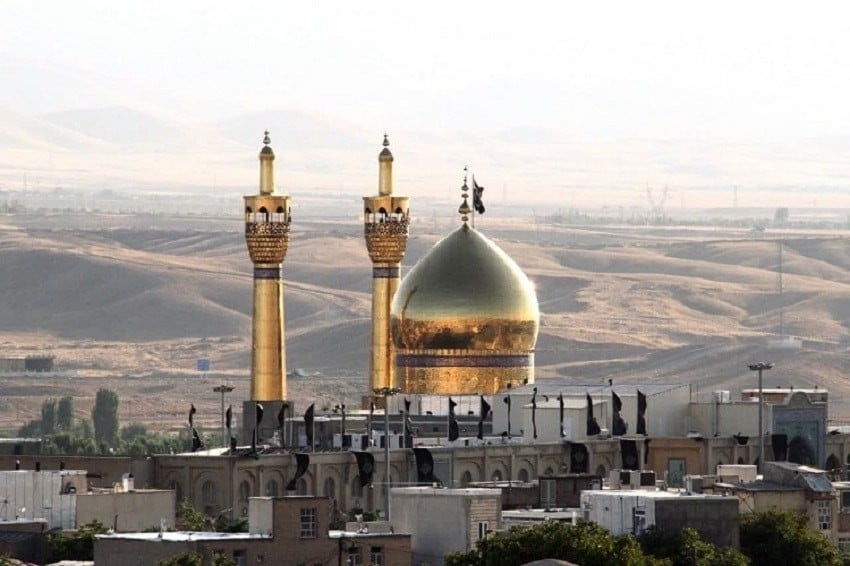
The hosseinieh of Zanjan is a place for religious gatherings and ceremonies. Mourners dressed in black take to the streets or gather in the hoseyniyeh to grieve the slaying of Imam Hossein .
The Imam flatly refused to give allegiance to the oppressive Umayyad caliph, Yazid. His martyrdom took place on the tenth of the Muslim month of Muharram, known as Ashura.
In the tragic massacre at Karbala, 72 loyal companions and Hussein met their martyrdom. Both Shi’ah and many Sunnis commemorate this battle annually over a 10-day period each Muharram. This period culminates on its tenth day, Ashura.
Zanjan Bazaar
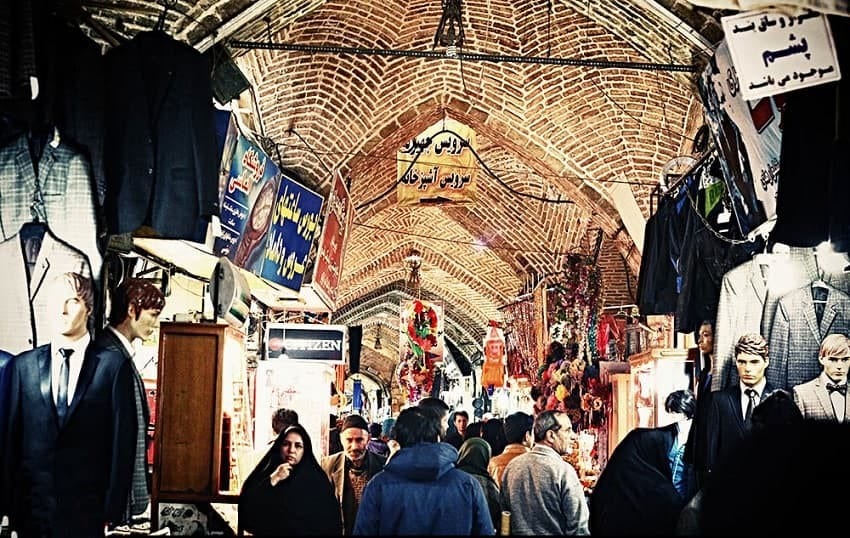
Zanjan bazaar is one of the most important historical complexes in Iran, and is a great attraction for tourists. It’s one of the oldest bazaars of the Middle East and the longest covered bazaar in the Iran. Dating back to the Qajar period, the bazaar is located in the heart of the old part of the city. It consists of two sections: the upper bazaar and the lower bazaar.
Having three main entrances in north, east and west the bazaar comprises almost 1000 shops and two baths called Mirli and Haj Ebrahim. In the past it could, and even now it can, meet all the needs of the people.
Serai Malek and Serai Golshan are the two main caravansaries of this bazaar. The complex was a proper place to social contacts nearby commercial centers from old days and played an important role in preserving national and religious customs.
This Bazaar divided into 8 segments (each to do with a specific guild) such as, jewel merchants, textiles, foot ware, saddle-makers, fruit sellers etc. Four of the most important mosques of Zanjan located here named as the Chehel Sotoon Mosque, Aqa Seyed Fathollah Mosque, Jame Mosque, Mirzaei Mosque.
Since Zanjan has hot summers and very cold and snowy winters people might not feel this weather conditions so severely when they are inside the complex due to the architecture of the roof.
So they may have opportunity to spend plenty of time to choose their desired products. Zanjan’s Bazaar.
Final Words
Zanjan, Iran, truly stands out as a dynamic fusion of history, culture, and commerce. The city’s famous bazaar buzzes with activity, offering an array of handcrafted jewels, textiles, and other unique items. Additionally, the tranquil historic mosques provide a serene counterpoint to the lively market streets.
Zanjan is perfect for travelers seeking to immerse themselves in Iran’s rich heritage, enjoy a unique shopping experience, or embark on a spiritual quest. The city welcomes visitors with open arms, offering a mix of vibrant urban life and impressive architectural wonders.
For anyone exploring Iran’s varied landscape, Zanjan is an essential stop. It beautifully captures the spirit of a journey that spans both time and diverse cultures. With its blend of traditional charm and contemporary vibrancy, Zanjan leaves an unforgettable impression on all who visit.
Read More
